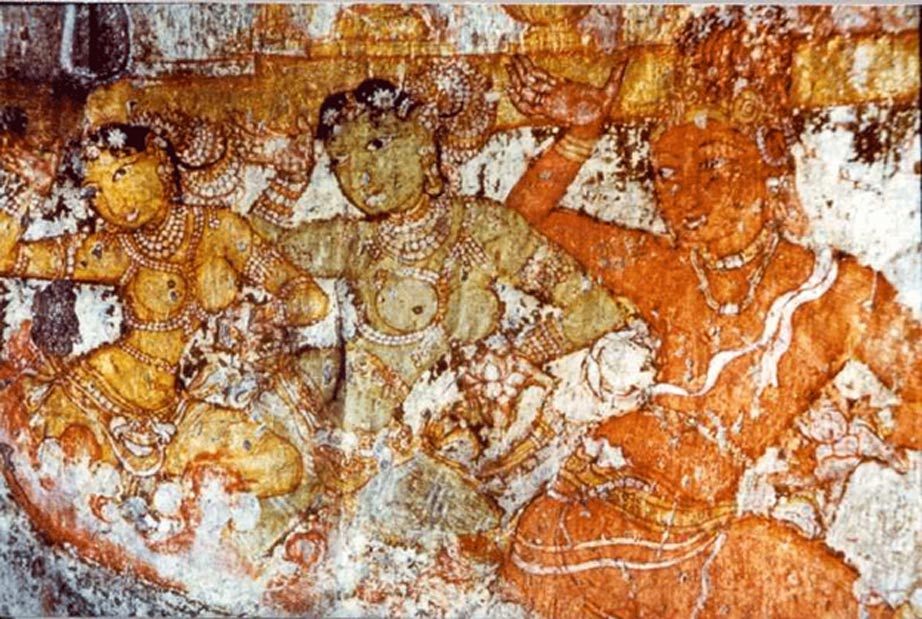The Extensive and Sometimes Mythical History of the Chola Empire
The Chola Empire was a southern Indian state that existed from around the middle of the 9th century AD until the 13th century AD. Although the Chola Empire was founded during the 9th century AD, the Chola Dynasty is said to have been in existence for a much longer period in time.
From the various poems of a Tamil work known as the Purananuru, a list of Chola kings has been constructed. According to this list, the Chola kings date as far back as around the end of the 4th millennium BC. (Although these kings have often been regarded as mythological figures.)
In the Sangam literature, reference to the early Chola kings can also be found. These early Chola kings (as opposed to those regarded as mythological) are said to have ruled parts of southern India from around the end of the 4th century BC.
Chola Empire Establishment
Although the Cholas were subdued by the Pallavas around 650 AD, they returned to power less than a century later. During the middle of the 9th century AD, the Chola Empire was established. Compared to the Chola kings from earlier periods, one is able to discuss about the rulers from this era with a little more certainty. Apart from the more reliable historical text (as opposed to mythology and literature), the Cholas of this period also left behind much material culture that can still be seen today.
- Discovery of Ancient Indian Daggers may push back Start of Iron Age by Hundreds of Years
- Important 800-Year-Old Jain Inscription Uncovered in India
- 335 years ago Indians drove out the Spanish out of New Mexico and secured their culture for posterity

Typical design of pillar with multi-directional mythical lions. Kailasanathar Temple. (CC BY 2.0)
The Chola Empire is commonly said to have been established in 848 AD by Vijayalaya Chola, who was likely to have been a vassal of the Pallavas. Due to the on-going conflict between the Pallavas and the Pandyas, Vijayalaya was able to defeat the Pallavas, and took Tanjore (now known as Thanjavur), a city in the modern Indian state of Tamil Nadu, form them. This city became the capital of the Chola Empire.

Thanjavur in 1869 (Public Domain)
Over the next few centuries, the Chola kings extended the borders of their empire through various means, and defended their territory from rival powers. For example, during the reign of Aditya Chola I, the son of Vijayalaya, the last Pallavan king, Aparajita, was able to gain a decisive military victory over the Pandyas thanks to the Cholas, who were his vassals. As a reward, Aditya was given territories by Aparajita.
Aditya, however, was not satisfied with such scraps. As he witnessed the weakness of the Pallavas during the battle, Aditya treacherously killed Aparajita, and annexed Tondaimandalam. Following the defeat of several other regional rivals, the way for Chola supremacy in southern India was opened.
Rajaraja I Chola
One of the most important kings of the Chola Empire was Rajaraja I Chola, who reigned between the end of the 10th century AD and the beginning of the 11th century AD. During his reign, the empire grew not only in military strength, but also developed an efficient and organized administration. As a result, the Cholas were able to further expand their territory by conquering areas such as Ceylon, the Maldives and parts of modern day Mysore. Furthermore, diplomatic ties with foreign powers, such as China’s Song Dynasty and Srivijaya (the dominant maritime power in Southeast Asia) were established.

Portrait of Rajaraja Chola and his guru Karuvurar at Brihadeeswarar Temple. (Public Domain)
The Chola Empire continued to flourish under Rajaraja’s successors. Towards the end of the 12th century AD, however, the empire began to decline. This period witnessed the rise of other powers that challenged the dominance of the Chola Empire in the southern Indian region. The most prominent of these was the Pandyas, a vassal of the Chola Empire.
In 1279, the Chola Empire came to an end when they were completely defeated by the Pandyas. Other regional powers, such as the Cheras, Hoysalas and Kakatiyas were also defeated, and the Pandyas emerged as the new dominant power in southern India.
Chola Art and Architecture
One of the legacies of the Chola Empire that can still be seen today is their art and architecture. The Chola kings are known to have built many temples in the territories that they ruled. As an example, the Brihadisvara Temple in Tanjore / Thanjavur was built during the reign of Rajaraja I, and has been said to be the “greatest achievement of the Chola architects”.
- Tracing Indo-Cambodian relations through Magnificent Stupa Architecture
- The Sree Padmanabhaswamy Temple: Secret Cellars Create the Richest Hindu Temple in India
- Newly discovered Rock Art Heritage in the Kaimur Range of Bihar
Apart from architecture, the Chola Empire is known also for their artistic achievements, in particular their bronze sculptures. Such sculptures have been made using the ‘lost wax’ technique, and normally depict deities. One of the most famous of these is the image of Shiva-Nataraja (Shiva as the Lord of the Dance), which continues to be copied in the south of India even till this day.

Bronze Chola Statue of Nataraja at the Metropolitan Museum of Art, New York City. (CC BY-SA 2.5)
Featured image: Chola Fresco of dancing girls. Brihadisvara Temple. Photo source: Public Domain
By Wu Mingren
References
Aggarwal, M., 2015. The History of Chola Empire. [Online]
Available at: http://www.historydiscussion.net/empires/the-history-of-chola-empire-indian-history/718
Arts Indian Atelier, 2000. Art of Cholas. [Online]
Available at: http://www.indianartcircle.com/arteducation/page_14_artofCholas.shtml
Glorious India, 2006. Chola Dynasty. [Online]
Available at: http://www.gloriousindia.com/history/chola_dynasty.html
Indian Mirror, 2016. Chola Dynasty. [Online]
Available at: http://www.indianmirror.com/dynasty/choladynasty.html
Kessler Associates, 2016. Cholas. [Online]
Available at: http://www.historyfiles.co.uk/KingListsFarEast/IndiaCholas.htm
UNESCO, 2016. Great Living Chola Temples. [Online]
Available at: http://whc.unesco.org/pg.cfm?cid=31&id_site=250



















